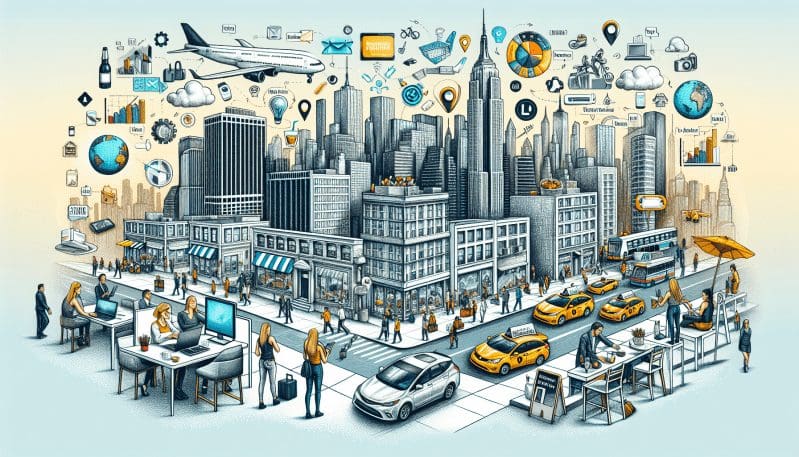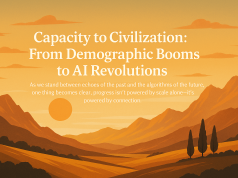As the sun rises over the iconic skyline of New York City, a new breed of workers is stirring. These aren’t your grandparents’ clock-in, clock-out employees; they’re the vanguard of the gig economy, a rapidly expanding labor force that is redefining what it means to work in the modern metropolis. This seismic shift has far-reaching implications for job security, benefits, and labor laws, sparking a complex conversation about the future of full-time employment in New York.
In the past decade, companies like Uber and Upwork have become household names, not just as punchlines of tech revolution jokes but as mainstays of the New York labor market. As these platforms gain prominence, traditional full-time employment models are being challenged, leaving many to ponder the stability and benefits once associated with a ‘steady job.’
For many New Yorkers, gig work offers unparalleled flexibility and the allure of being one’s own boss. The city that never sleeps is an ideal playground for gig workers, with its constant demand for services and the opportunity to work ’round the clock. But beneath the gloss of autonomy, there are serious concerns about job security. Without the safety net of full-time employment, gig workers face unpredictable income streams and a lack of long-term financial stability.
Benefits, or the lack thereof, are another flashpoint in the discussion about gig work. Health insurance, paid leave, and retirement savings plans – often taken for granted in full-time roles – are not typically part of the gig economy package. This leaves workers vulnerable, particularly in a post-pandemic world where health and well-being have taken center stage.
New York’s labor laws have been scrambling to keep pace with these changes. The challenge lies in protecting the rights of gig workers without stifling the innovation and flexibility that make the gig economy attractive. It’s a legislative high-wire act that has seen both triumphs and setbacks. One notable response has been the push for laws that classify gig workers as employees rather than independent contractors, entitling them to greater legal protections and benefits.
Traditional businesses in New York aren’t merely spectators in this evolving labor landscape; they’re active participants. Some have adopted gig-like features in their work models to attract talent and remain competitive, while others have doubled down on the perks of full-time employment to retain their workforce.
The rise of gig work is undeniably reshaping the New York workforce, prompting a larger conversation about what the future of work should look like. Policymakers, worker advocacy groups, and industry leaders are all part of this dialogue, each bringing to the table their visions for a sustainable and fair work environment that serves the needs of both gig workers and full-time employees.
The ‘Big Apple’ is a microcosm of the global labor market, and the solutions it pioneers could serve as a blueprint for cities worldwide. As New York grapples with the gig economy’s challenges and opportunities, one thing is clear: the city is at the forefront of defining the new work normal. The question now is not whether the gig economy will continue to grow, but how the city will adapt to ensure that all its workers – whether they’re behind the wheel of an Uber or on the payroll of a legacy corporation – can thrive in the shadow of the skyscrapers.
The future of work is unfolding on the streets of New York, and the entire world is watching. What happens next could redefine the meaning of employment for generations to come.




























